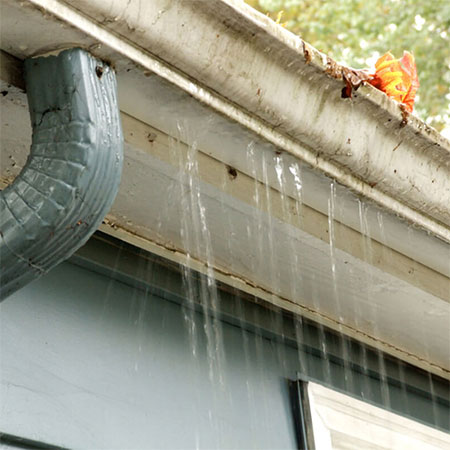It's Never A Good Idea To Ignore Leaks In Your Home!
Any type of leak can, in the long term, cause a lot of damage and, no matter how small, if not repaired asap it could result in mould and expensive repairs down the line.
26/01/2021
If you have any obvious leaks in your home, ignoring them can cause a lot of damage that will be expensive to repair later on. Even a small leak should be repaired as quickly as possible if you want to avoid problems.
Common types of leaks
In an older home, it's not unusual to encounter leaks regularly, and if attended to immediately, you can put off incurring expensive costs that are normally associated with leaks not attended to. Bathrooms and kitchens in older homes are prone to leaks in one form or another, especially if they still have the original plumbing and fittings - whether it's leaks from taps, leaky shower or a toilet.
• Dripping taps
Worn tap washers are the most common cause for leaky taps and it's a 10-minute job to replace a worn tap washer. Another reason for leaks is worn out or corroded parts inside the tap and if you are going to all the trouble of fixing leaks in old fittings and fixtures, it might be in your interests to have these replaced with newer, more water-saving fittings.
• Leaks under sinks
Leaks underneath sinks are another problem with older homes, most commonly due to corrosion around clamps or worn water hoses. You can replace these as a do-it-yourself project if you have an idea of what you are doing, but it's always a good idea to get a plumber to take a look to see if anything else needs to be replaced.
• Leaks damaging floors or walls
If you spot any leaks that might be related to a bathtub or shower, leaks that are perhaps causing damage to flooring and walls, these should be quickly address to prevent further damage. This type of damage is generally related to old pipes and could indicate that the existing plumbing is corroded and needs to be replaced. Not a job you can do yourself, better call in a professional leak detection service and let them investigate.
• Leaks around toilet
When water starts to appear around the exterior of a toilet, you know something needs to be done immediately. It could be something as simple as replacing the coupling seal at the back of the toilet or something a bit more complicated such as a crack in the toilet or cistern, or worn fittings in the cistern. You can repair a leaky coupling seal at the back with a wax seal that you can purchase at Builders or hardware store, but cracks or worn seals in an older cistern can't be replaced and the only solution will be to have a new toilet fitted.
• Leaks from a geyser
Any signs of a leak from a geyser should be investigated immediately if you want to avoid a burst geyser or flooding your home. If an old geyser is installed (older than 10 years), wear, corrosion and leaks are inevitable and the geyser should be replaced.
As a rule, any signs that could relate to water damage should be attended to immediately to prevent any long term water damage.
How do you know if you have a leak?
Not all leaks will be immediately visible and it may take time before you start seeing water stains, mould growth, paint peeling or bubbling on walls, or wood fittings that have swollen. Sometimes, however, it can be harder to notice leaks. Always check your water reading to see if there is a significant rise in the reading, as this could be an indication of a leak.
• How to spot hidden leaks
Paint peeling or bubbling on walls or around
windows and doors is a sure give away for wet
walls, as is wet carpets, water stains on
ceiling or swollen skirting boards. Leaks not
immediately visible can also show up as warped
flooring or tiles that are lifting. If you notice
any of these signs, take immediate action to
prevent expensive repairs.
It can be difficult to know when there is an exterior leak but water stains, warped ceilings and damp walls are a giveaway.
Regular roof inspections are essential
• Roof leaks
A leaky roof is not an uncommon problem, no matter what type of roofing material is installed. Age, wear, loose tiles, pooling water, corroded flashings or fastenings - all can occur over time and it is important to have the best roofer inspect your roof annually to prevent any leaks before they happen.
• Leaky gutters
Leaking around joins on gutters or due to blockage are a regular occurrence that can be prevented with an annual inspection and regular cleaning of gutters and downspouts.
Perform annual maintenance
• Keep gutters clean
Cleaning out gutters and downspouts should be performed regularly, especially before seasonal rains arrive. Clean gutters and downspouts will ensure water does not build-up and damage walls.
• Check sealing
Any sealing done around doors and windows should be inspected regularly, particularly around window frames. Where sealing is missing, replace this immediately. Also check that the beading around window panes is in good condition, or replace if necessary.





